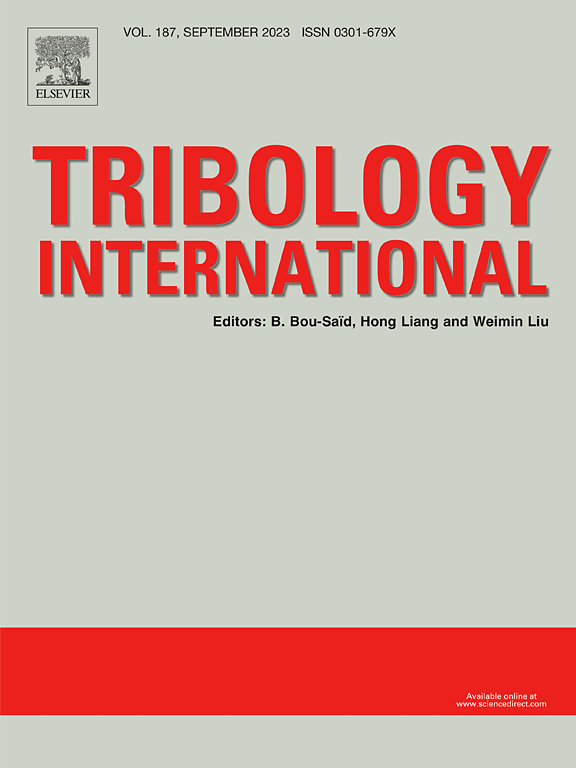高温下GH2132/GH4169微动磨损摩擦层的演变
IF 6.1
1区 工程技术
Q1 ENGINEERING, MECHANICAL
引用次数: 0
摘要
为了研究GH2132/GH4169高温合金副中摩擦层的发展,采用系统的切向微动磨损中断试验,分析了600℃下摩擦层的组织、化学成分、形成机制和演化特征。结果表明:在微动初期,材料在接触区域发生剧烈的塑性变形,晶粒内的位错积累促进了动态再结晶和裂纹萌生,最终导致显著的粘着磨损;随着试验的进行,氧化碎屑的摩擦烧结和晶粒的不断细化产生了致密的纳米晶摩擦层,硬度提高。该摩擦层由纳米晶金属氧化物、未氧化的纳米颗粒和非晶相组成,形成于接触界面,并作为机械和化学上坚固的屏障。它抑制金属与金属的接触,减缓氧化,并显着降低磨损率,从而稳定磨损表面。本文章由计算机程序翻译,如有差异,请以英文原文为准。
Evolution of tribolayer in GH2132/GH4169 fretting wear at elevated temperatures
To investigate the development of the tribolayer in the GH2132/GH4169 superalloy pair, a systematic tangential fretting wear interruption test was conducted to analyze the microstructure, chemical composition, formation mechanism, and evolutionary characteristics of the tribolayer at 600℃. The results reveal that in the early stages of fretting, severe plastic deformation of material in the contact area and dislocation accumulation within the grains promote dynamic recrystallization and crack initiation, ultimately resulting in significant adhesive wear. As the test progresses, tribo-sintering of oxidized debris and continuous grain refinement give rise to a dense nanocrystalline tribolayer with enhanced hardness. This tribolayer, which is composed of nanocrystalline metal oxides, unoxidized nanograins, and amorphous phases, forms at the contact interface and serves as a mechanically and chemically robust barrier. It suppresses metal-to-metal contact, slows oxidation, and significantly reduces the wear rate, thereby stabilizing the worn surface.
求助全文
通过发布文献求助,成功后即可免费获取论文全文。
去求助
来源期刊

Tribology International
工程技术-工程:机械
CiteScore
10.10
自引率
16.10%
发文量
627
审稿时长
35 days
期刊介绍:
Tribology is the science of rubbing surfaces and contributes to every facet of our everyday life, from live cell friction to engine lubrication and seismology. As such tribology is truly multidisciplinary and this extraordinary breadth of scientific interest is reflected in the scope of Tribology International.
Tribology International seeks to publish original research papers of the highest scientific quality to provide an archival resource for scientists from all backgrounds. Written contributions are invited reporting experimental and modelling studies both in established areas of tribology and emerging fields. Scientific topics include the physics or chemistry of tribo-surfaces, bio-tribology, surface engineering and materials, contact mechanics, nano-tribology, lubricants and hydrodynamic lubrication.
 求助内容:
求助内容: 应助结果提醒方式:
应助结果提醒方式:


